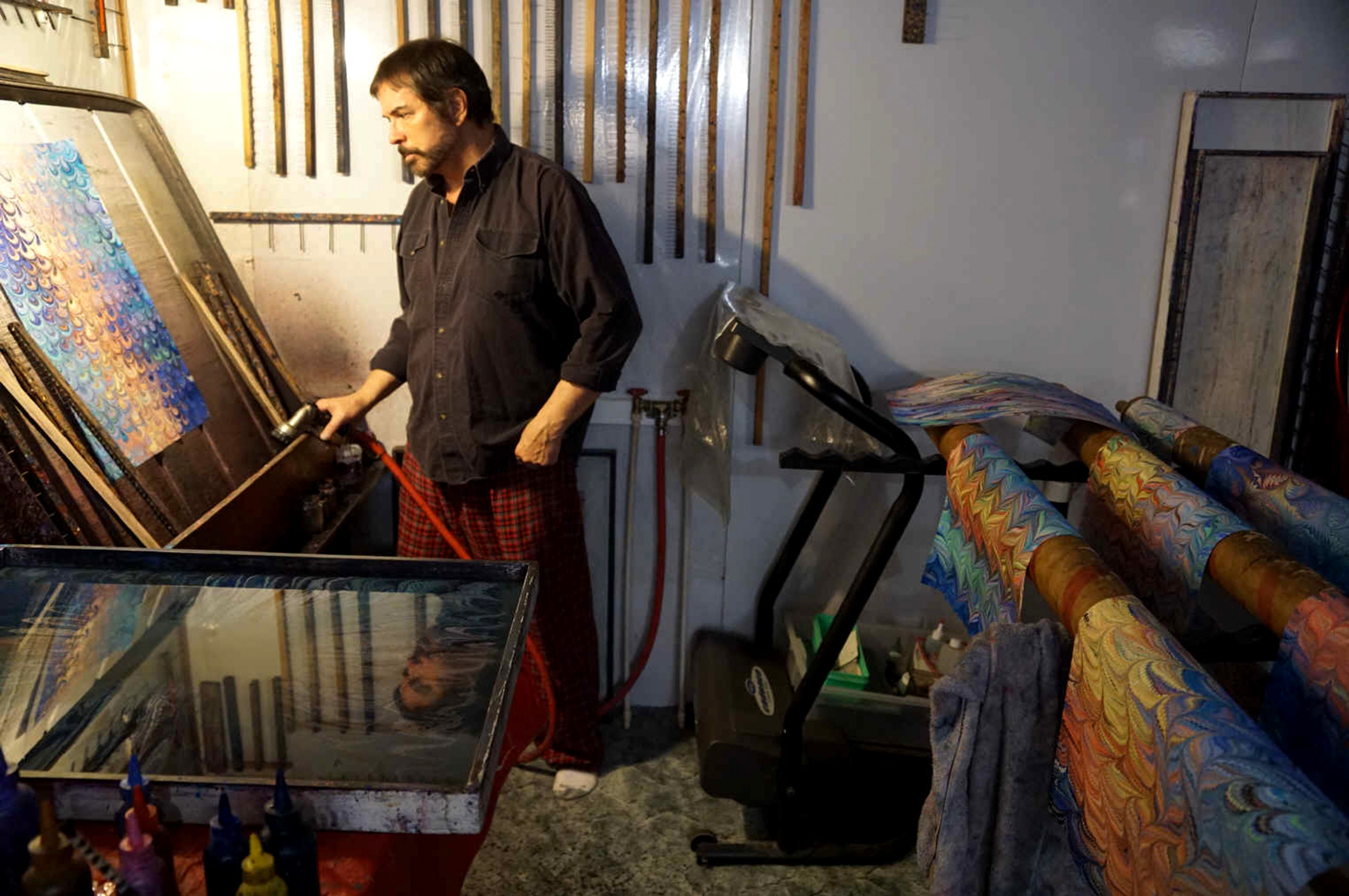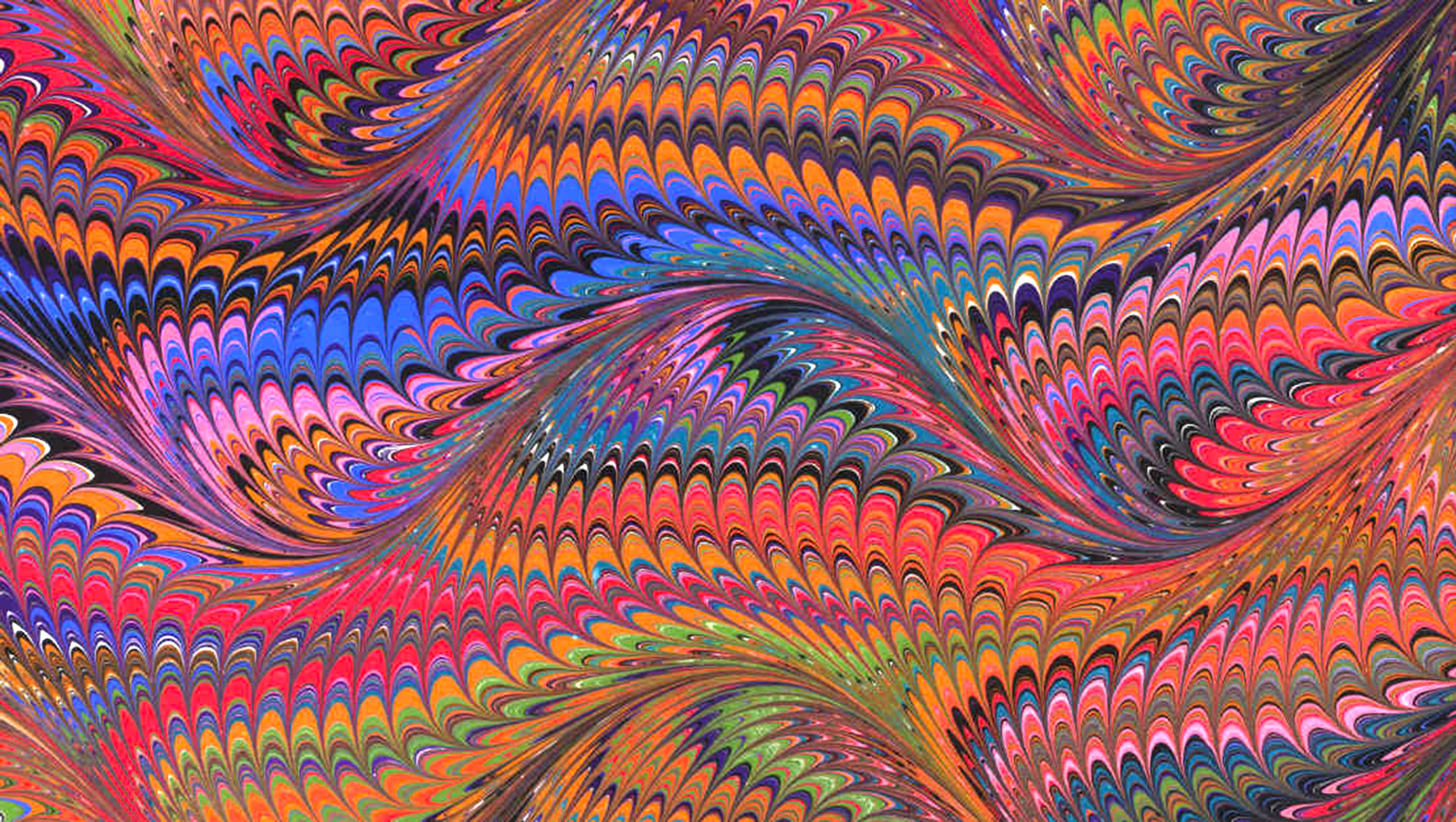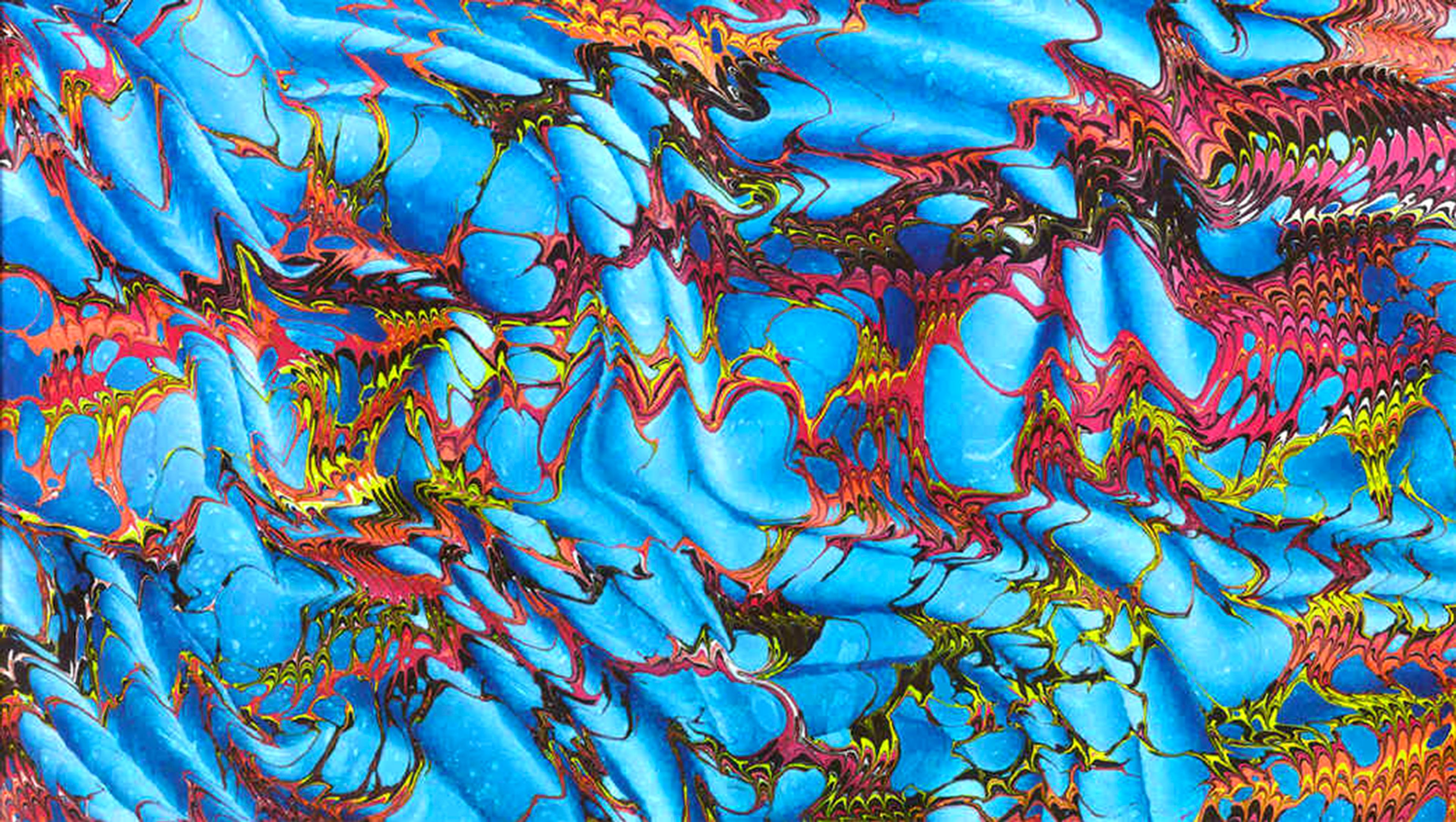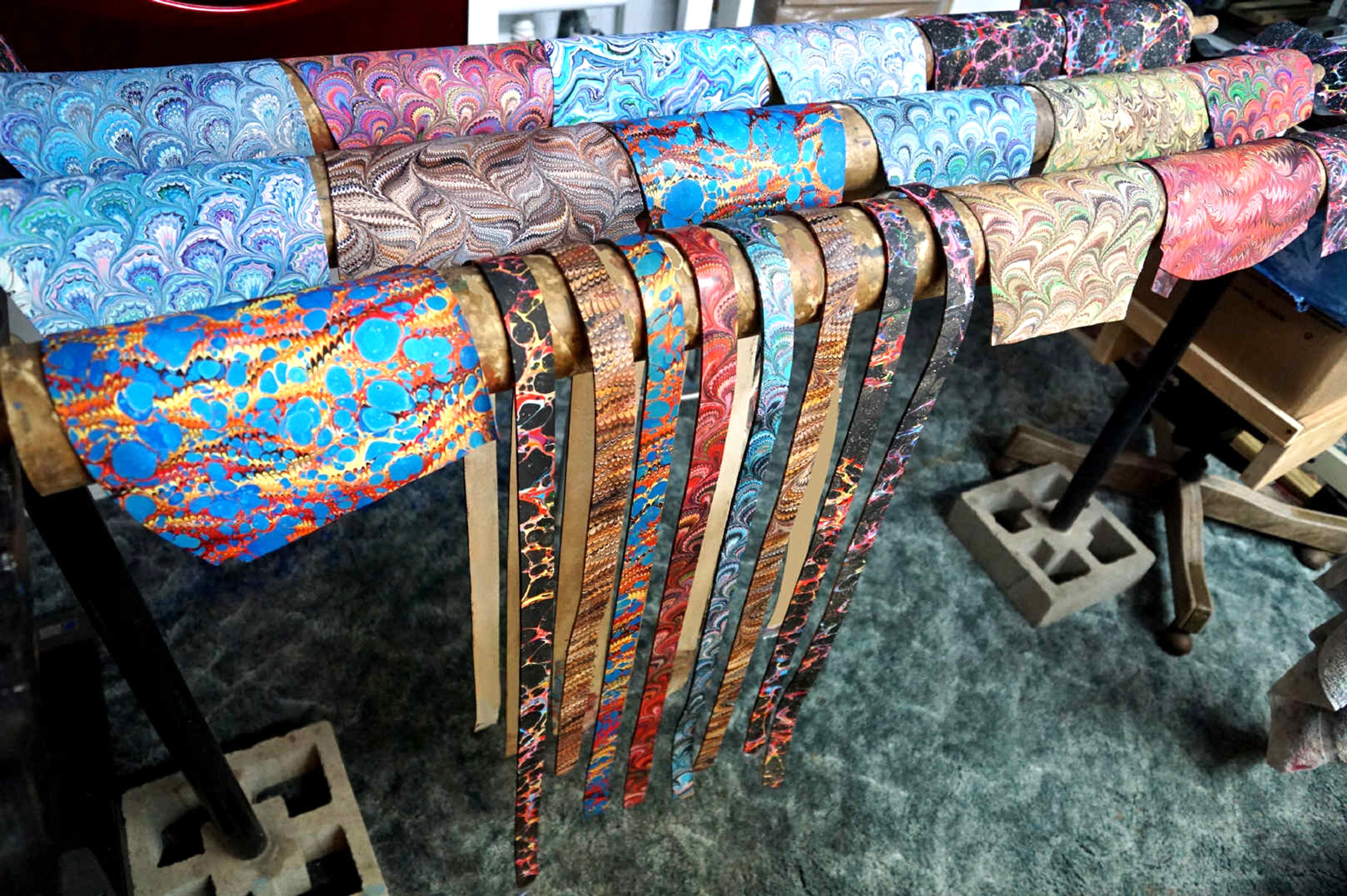'Magic art'
Paper marbling offers instant gratification, even for beginners
Before he tried the ancient art of paper marbling for the first time, Chuck Staben thought the printmaking process was too sophisticated or difficult for laypeople to do on their own.
“I thought it was magic art,” said Staben, who served as president of the University of Idaho in Moscow from 2014-19.
Once he tried it, though, he discovered a hobby that offers endless room for creativity — and that lets people turn out stunning patterns from the start.
“If you follow the instructions, you can instantly make stuff that looks really high-end,” Staben said. “There aren't too many crafts where you can say that.”
Staben's interest in paper marbling stems from his academic background. As a college student and biochemistry researcher, he spent a lot of time in libraries, perusing older journals. He often came across books with gorgeous printed designs on their outside covers or inside endpapers.
“They looked really cool,” he said. “I wondered how they did it.”
The sheets are printed individually. Although each is unique, they feature some common patterns — typically either intricate geometric shapes or rounded and swirled patches of color that look like marbled rock.
“That’s where the name comes from,” Staben said. “The drops of color are called ‘stones.’ ”
He eventually ordered a paper marbling kit as a Christmas gift and found that the process of creating the sheets was much easier than expected.
“It's not hard,” Staben said. “When I was president of UI, I did it as a team-building exercise. I'd give a demonstration and then everyone would make their own print.”
Paper marbling originated in Asia more than 1,000 years ago. However, the form that took root in Europe and the United States was developed separately in Turkey or Persia. It was later imported to France and the Netherlands during the Crusades.
The process starts with a viscous mixture of water and carrageenan, a product of algae. The liquid, called “size,” is placed in a tray; different colors of paint are then splashed or dabbed across the surface — kind of like a Jackson Pollock masterpiece.
At that point, the artist can either drag a kind of rake or stylus through the mixture, causing the colors to intermingle and create a geometric design, or capture the marbled stone effect by leaving the dots undisturbed.
Once the pattern is finished, a piece of paper or absorbent fabric is laid across the surface. The paint is transferred onto the sheet, which is then dried. It can be used by bookbinders or cut into smaller pieces to make gift cards or other products.
“It’s an instant gratification art,” said Galen Berry, who owns the marbling supply store where Staben bought his marbling kit.
“I’ve taught more than 4,000 students over the years,” Berry said. “I’ve had kids from the third grade on up who turn out stuff that looks professional on the first attempt. It stuns them, and their parents.”
Berry’s enthusiasm for paper marbling knows no bounds. He’s been practicing the art for nearly four decades, but still wakes up in the middle of the night thinking about new patterns or techniques.
As an art form, he said, marbling is extremely receptive to experimentation. For example, the rakes or combs that are dragged through the dots of paint are often made of nails set in a wooden frame. Varying the width of the nails or the spacing between them creates different effects as the rake is pulled through the tray of size.
The direction in which they’re pulled also changes the resulting pattern. Additional effects can be created by undulating the rake from side to side as it's being dragged through the mixture, or by using a single stylus to draw swirls or eddies in the paint.
Berry’s website, marbleart.us, has hundreds of examples of the different patterns and color combinations that are possible — everything from the “basic” nonpareil pattern to peacock feathers, fishtails and butterfly wings.
Expert marblers can even create waves or 3D effects by crumpling the paper and/or shifting it around when it’s laid in the tray.
“There’s so many different patterns and effects you can create, and so many different combinations of colors,” Berry said. “I have one pattern I did about 20 years ago, and I still can't remember how I made it.”
Beginning marblers can get good results from the very start, but Staben said certain printmaking skills do improve over time.
For example, “you learn how to produce more uniform patterns,” he said.
Just laying the paper down in the tray of size also takes some practice. If your hands shake, it can cause streaking. A bubble under the surface will also leave a colorless blob in the middle of the pattern. Dust and hairs cause defects as well.
Understanding color combinations is another thing that improves over time.
“You learn which colors look good next to each other,” Berry said.
Good marblers typically have certain patterns or techniques that they specialize in, he said. Some have a more modern style, but many patterns are indistinguishable from those created hundreds of years ago.
Making a single print with a simple design may only take about five minutes, Berry said, but mixing the paints beforehand and cleaning up afterward can add a lot of time. When he’s making prints, he’ll usually do about 24 sheets in a day.
“By then my back hurts, so it’s time for a break,” he said.
Besides paper, marbling can also be done on leather, wood and silk or other fabrics.
A beginner marbling kit is available on Berry’s website for $99. Paint is sold separately for $6 per bottle.
Spence covered government and politics for the Lewiston Tribune for 14 years before retiring at the end of 2022. He enjoys hiking, birding, eating and talking with people about their passions.













